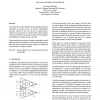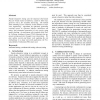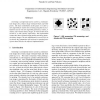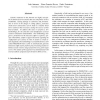190 search results - page 2 / 38 » Isomorph-Free Exhaustive Generation |
ITC
1989
IEEE
13 years 9 months ago
1989
IEEE
: The concept of a pseudo-exhaustive test for sequential circuits is introduced in a similar way as it is used for combinational networks. Instead of test sets one has to apply pse...
SEW
2006
IEEE
13 years 11 months ago
2006
IEEE
Pseudo-exhaustive testing uses the empirical observation that, for broad classes of software, a fault is likely triggered by only a few variables interacting. The method takes adv...
IPPS
2007
IEEE
13 years 11 months ago
2007
IEEE
Screening is an important task to convert a continuoustone image into a binary image with pure black and white pixels. The main contribution of this paper is to show a new algorit...
ISSRE
2008
IEEE
13 years 11 months ago
2008
IEEE
Systems connected to the Internet are highly susceptible to denial-of-service attacks that can compromise service availability, causing damage to customers and providers. Due to e...
TCS
2010
12 years 12 months ago
2010
Abstract. A trivalent diagram is a connected, two-colored bipartite graph (parallel edges allowed but not loops) such that every black vertex is of degree 1 or 3 and every white ve...




